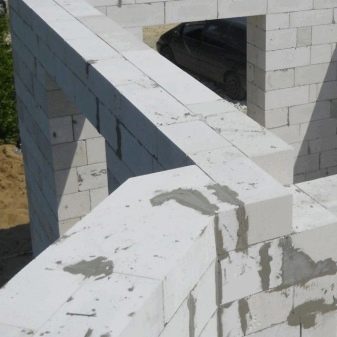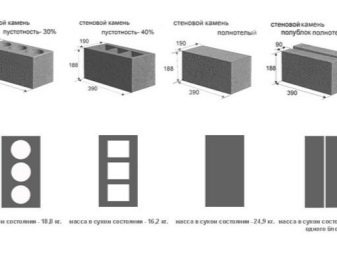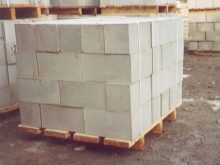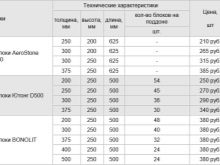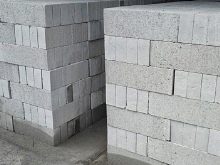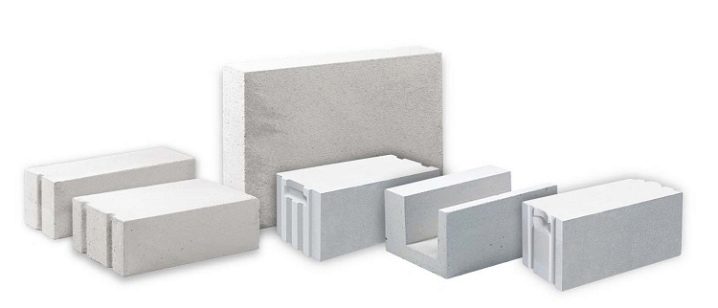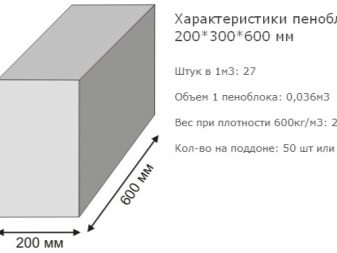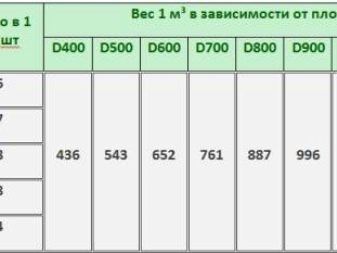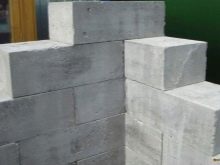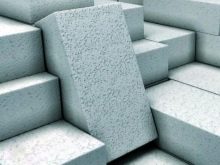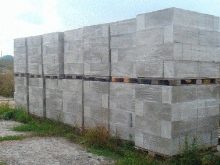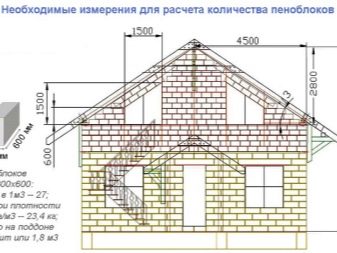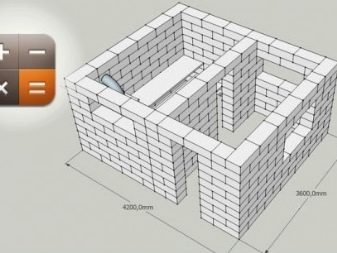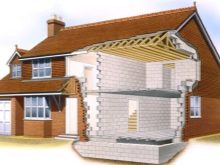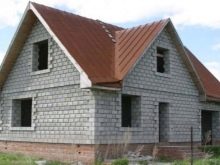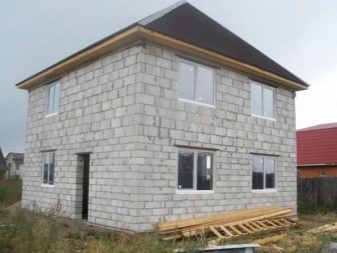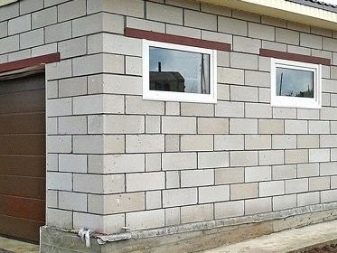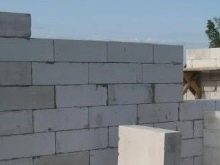How to calculate foam block consumption?

Foam concrete is a very popular modern material, and private and commercial developers value it to the same extent. But all the advantages of products made of it are complicated by the heavy calculation of the required amount of material. You need to know how to do everything as quickly as possible and without errors.
Block sizes
Construction companies and manufacturers count the number of foam blocks in pieces. But this method is not very acceptable for a private customer, because it leaves too high a probability of error. The most popular dimensions of blocks in Russia are sizes 600x300x200 mm. The smallest commercially available version is 600x250x250 mm. And the largest - 600x500x250 mm.
Still sometimes there are designs of the following sizes, mm:
- 250x300x600;
- 200x400x600;
- 300x300x600;
- 300x400x600.
Quantity in the pallet
To calculate the number of foam concrete blocks in 1 pallet, it is necessary to take into account only the dimensions of the material itself and the size of the pallet. Before buying, it is imperative to check the certificates of quality and product compliance with state standards. Suppose there is a set of blocks with a size of 200x300x600 mm, which are required to be placed in pallets 1200x990 mm. This volume of the pallet is not specified by chance - it is most often used by modern manufacturers. For the convenience of counting, any manufacturer always places the same number of products on pallets.
Blocks of 600x300x200 mm in one pallet with a capacity of 1.8 m3 can accommodate exactly 50 pieces. If it is required to calculate the capacity of the pallet only in square meters, the standard solution is to multiply the length by the width. For the same maximally popular version of foam concrete structures, the result will be 0.18 m2. That is, on 1 square. m square pallet fits 5 foam elements.
Returning to the volumetric calculus, it is necessary to point out such mass types of pallets as:
- 0.9;
- 1.44;
- 1.8 cu m
When laying out the most common group of foam concrete products, 25, 40 and 50, respectively, can fit on them. The mass of the product, whose density is 600 kg per cubic meter. m, can reach 23.4 kg. But real construction often involves the use of blocks of non-standard size.
The layout for all three main dimensions (0.9, 1.44 and 1.8 m3) of pallets is:
- for blocks 100x300x600 - 50, 80 and 100 pieces;
- for blocks 240x300x625 - 20, 32, 40 units;
- for blocks 200x300x625 - 24, 38, 48 copies.
Euro pallet is a pallet with a size of 0.8x1.2 m. When using it, it is advised to lay out elements of 2 pcs. in length and 4 pcs. wide. On 1 substrate, you can make 5 rows. If we apply a standard sample pallet, its area will be larger, because the size is 1x1.2 m. 2 pieces are put on such a pallet. foam products in length and 5 pcs. in width; all the same 5 rows are used.
Complexity is the calculation of non-standard blocks that need to be laid out on atypical pallets. Suppose, when measuring, it was found that the width of a pack is 1 m, and its length will be 0.8 m (at a height of 120 cm). The simplest calculation of school formulas will show the volume - 0.96 m3.
Measurement of individual products shows that they have sides:
- 12 cm;
- 30 cm;
- 60 cm
The volumetric index is calculated very easily - 0.018 m3. Now it’s clear exactly how big a pack is and how big a pack is. Further calculus is not difficult. There are exactly 53 parts per pack. After all, no supplier will lay a third of the foam concrete element during shipment.
How many in a cubic meter?
The number of pieces of foam blocks in a cube is quite easy to determine. This indicator will allow to find out more how many of them will be in the package or in a pack of a given capacity. To begin with, the volume of a single block is calculated. When using products with a size of 100x300x600 mm, the volume of each of them will be 0.018 m3. And for 1 cu. m will account for respectively 55 building elements.
It so happens that the size of the foam block is 240x300x600 mm. In this case, the volume of a single product will be equal to 0.0432 m3. And in 1 cu. m will be 23 foam concrete products. It is necessary to proceed from the same figure when taking into account the transportation of material by different types of transport.
The most massive variant of the blocks (200x300x600 mm) allows laying on 1 cu. m 27 products. Structures 100x300x600 mm are needed to form partitions and internal walls. When calculating regularly round the result in the lower direction.As shown by the calculations, determining the amount of material that will help to repair or complete construction is quite easy. Therefore, the calculation is desirable to control the accuracy of suppliers.
The foam block 200х200х400 mm has a volume of 0.016 m3. That is, for 1 cu. m accounts for 62.5 copies, and if you use elements of 20x30x40 cm, the volume will be 0.024 cu. m, so for 1 cu. m will have 41 pieces of foam blocks. If we apply constructions of 125x300x600 mm, each of them will occupy 0.023 m3 in volume, and 43 units will be per 1 m3. Occasionally, construction sites send a foam block of 150x300x600 mm. Such parts in 1 m3 will fit 37 pieces with a unit volume of 0.027 m3.
Calculation at home
In reality, of course, residential buildings and other buildings are made not from “cubic meters”, but from the foam concrete itself. But you still need to carefully calculate the needs. To begin with, we repeat: when calculating the number of blocks that fit in 1 cu. m, it is required to round the result not to a greater, but to a smaller side in any case. Mathematics, of course, is strict, but this technique allows you to accurately place the delivered blocks in the back of a car or in a warehouse.If the counting is done in pieces, it is enough to multiply the dimensions of all the elements, and then divide the result by a thousand.
To calculate the total mass of all the blocks used for building a house, most often they are guided by the standard dimensions of foam blocks - 20x30x60 cm. The typical weight of such a structure is approximately 21-22 kg. This calculation helps to find out how much pressure will be exerted by a separate wall on the foundation. As for the number of foam concrete products consumed for the construction of a 6 by 8 m house, the total volume of the structures being formed is calculated first. Only then take the size of frames, doors and other auxiliary, decorative parts.
A similar approach is practiced in the construction of buildings in the form of squares of 10x10 m. The calculation of the cubic capacity is certainly carried out taking into account the thickness of the main walls. And here the laying method is crucial. If you put the foam concrete fragments flat, the consumption will be larger in volume and quantity.
Let the perimeter of the house is 40 m, and the height of the building - 300 cm. With a wall depth of 0.3 m, the total volume will be 36 cubic meters. m. Therefore, the necessary structure can be constructed from 997 elements of a standard dimension. But it so happens that the unit is mounted with a small edge in the wall.Then the same perimeter is multiplied by 20 cm and by 300 cm at the height mentioned. In this case, it will be possible to do with only 664 blocks.
Obviously, this brings tremendous savings to any customer. In the southern, relatively warm areas laying a small edge of the most rational. The calculation of the weight characteristics of foam concrete is determined by the purpose of its use. So, the sound-proof type of material is made according to a special technology, which means foaming inside.
But even the emergence of a large number of pores does not mean that you get a light wall. Quite the contrary: the production uses cement category M500, so the construction will be three times heavier than a regular product. However, this is justified by the increased strength and density. Such advantages are not overshadowed by even the increased cost.
The lightest foam block is designed to retain heat, because during production not only they create pores, but they also try to use lightweight cement. The most accurate calculations of the parameters are made in specialized organizations, but for private use such subtleties are not needed.
Let us give another example: a house with a length of 6 and a width of 8 m, with a standard height (all the same 3 m).The total perimeter will be 28 m, and the area of the walls - 84 m2. But we should not stop at this stage, as there are still openings not taken into account that need not be made of foam concrete at all. Let after the deduction of all extraneous elements the formed area will be 70 square meters. m. If the thickness is equal to 20 cm, then the volume of material will be 14 cubic meters. m, and with a construction depth of 0.3 m, it will grow to 21 m3.
The most frequently used block, as already mentioned, has a volume of 0.036 m3. That is required 388 and 583 details, respectively. The calculation for laying flat and for a narrow calculation is carried out according to the scheme already described. However, it often turns out that in practice the number of blocks computed most thoroughly is not enough. The fact is that sometimes in the workplace they allow marriage, and then the foam parts are not very suitable for real work.
Therefore, you need to buy them exclusively from trusted suppliers. But even they occasionally make mistakes. Not to mention violations during storage and transportation, damage during the use of foam concrete. To compensate for errors and difficulties is easy. It is only necessary to prepare a reserve of 5% to completely eliminate all surprises.
In certain cases, an individual order for foam blocks is practiced. Then their size is completely non-standard and you cannot find ready-made figures in the tables. Let the blocks of 0.3x0.4x0.6 m be ordered. And let the house be the same square of 10x10 m. The total volume of 1 part will be 0.072 cubic meters. m, that is, you need exactly 500 elements.
If the construction of the house uses windows and doors of various sizes (as it often happens), the simplest calculation is much more complicated. However, there is another trick that will help amateur developers. They only need to find a volumetric cumulative characteristic. The linear values are added together. There is not even a difference where the window and where the door - when calculating the size is not essential.
In the next video, you will find the installation of foam block partitions from Alexey Zemskov.
